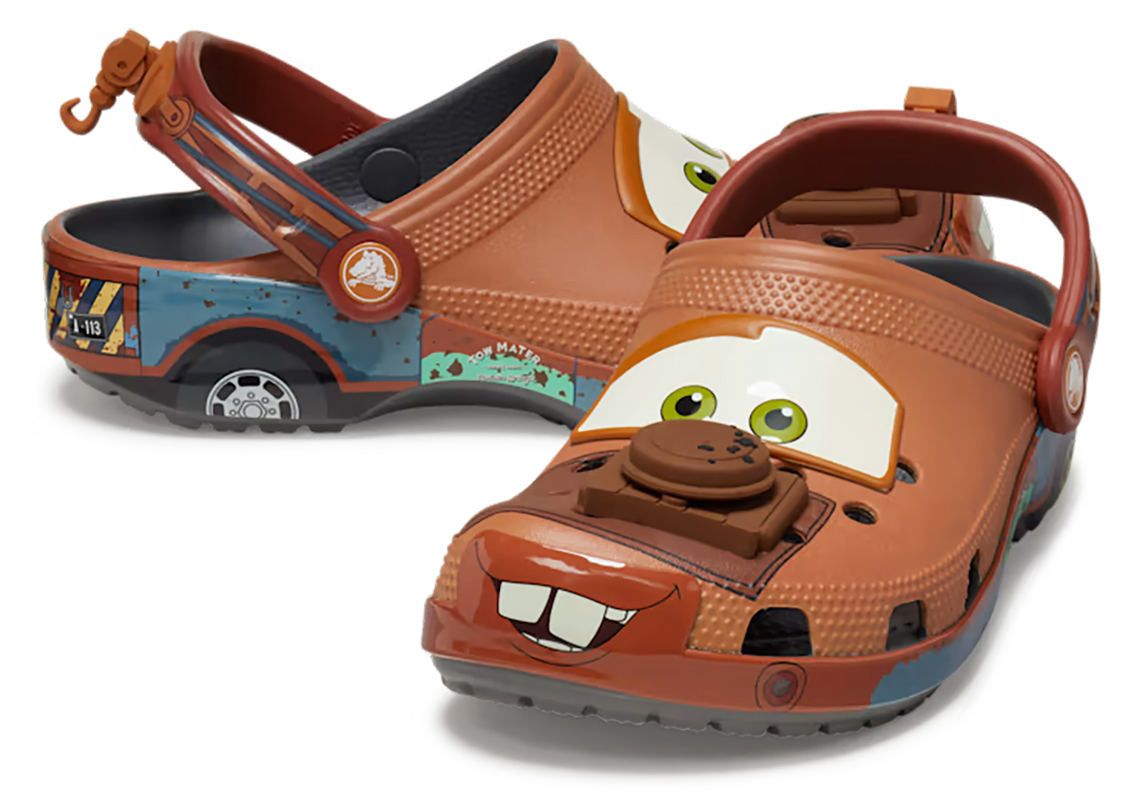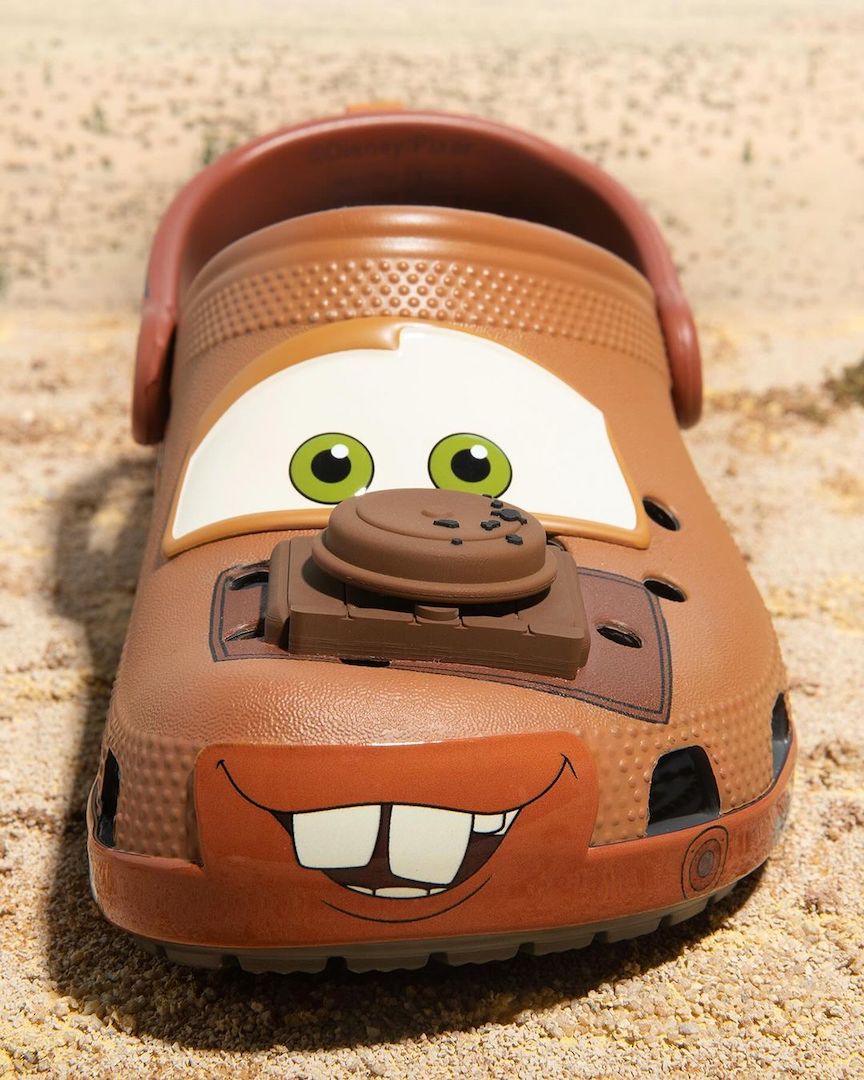Mater crocs, the protective covering of a crocodile's back, stand as a testament to nature's ingenious design, offering a fascinating glimpse into the world of these ancient creatures.
Mater crocs, or osteoderms, are bony plates embedded in the skin of crocodiles, extending from the neck to the tail. These plates serve as a crucial defense mechanism, providing protection against predators, sharp objects, and the harsh environment.
Their importance extends beyond mere protection. Mater crocs play a vital role in temperature regulation, aiding in heat absorption and dissipation. Moreover, they contribute to the crocodile's buoyancy, assisting in their aquatic maneuvers.
Read also:Uncovering The Secrets Of Ambika Mods Husband A Detailed Examination
Mater Crocs
Introduction: Highlighting the importance of mater crocs as a defining characteristic of crocodiles, emphasizing their evolutionary significance and ecological relevance.Key Aspects: List key aspects with brief descriptions:- Defense Mechanism: Protection against predators and environmental hazards.- Temperature Regulation: Aid in heat absorption and dissipation.- Buoyancy Assistance: Contribute to the crocodile's ability to float and maneuver in water.- Evolutionary Adaptation: A result of millions of years of adaptation to diverse habitats and challenges.Discussion: Detailed discussion on the key aspects, through examples, connections, or linkage to the main topic.Mater Crocs as a Defense Mechanism
Introduction: Set the context of mater crocs as a defense mechanism, emphasizing their effectiveness against predators and environmental hazards.Facets: List facets with titles and explanations, including roles, examples, risks and mitigations, impacts and implications:- Predator Protection: Protection against attacks from other animals, such as lions, tigers, and hippos.- Environmental Hazards: Resistance to sharp objects, rough terrain, and extreme temperatures.- Risk Mitigation: Reduced risk of injury and increased survival rates.Summary: Link facets back to the main theme of mater crocs as a defense mechanism, highlighting their significance in the survival and well-being of crocodiles.Mater Crocs in Temperature Regulation
Introduction: Focus on the connection between mater crocs and temperature regulation, considering their role in heat absorption and dissipation.Further Analysis: Provide more examples or discussion on practical applications:- Heat Absorption: Mater crocs absorb heat from the sun, aiding in maintaining body temperature in cold environments.- Heat Dissipation: Release of excess heat through the mater crocs, preventing overheating in warm environments.- Behavioral Adaptations: Crocodiles bask in the sun to warm up and seek shade to cool down, complementing the thermoregulatory function of mater crocs.Summary: Summarize key insights, addressing challenges or linking to the broader theme of mater crocs as a multi-faceted adaptation.Mater Crocs
Mater crocs, the bony plates embedded in the skin of crocodiles, play a crucial role in the survival and well-being of these ancient creatures. Here are six key aspects that highlight the multifaceted significance of mater crocs:
- Protective Armor
- Thermoregulation
- Buoyancy Aid
- Species Identification
- Fossil Record
- Cultural Symbolism
Mater crocs serve as a protective armor, shielding crocodiles from predators, sharp objects, and environmental hazards. They aid in thermoregulation, absorbing heat from the sun and dissipating excess heat to maintain optimal body temperature. Additionally, mater crocs provide buoyancy, assisting crocodiles in floating and maneuvering in water. Furthermore, the patterns and arrangements of mater crocs contribute to species identification, aiding in scientific classification and ecological studies.
Mater crocs also play a role in the fossil record, providing valuable insights into the evolutionary history and diversity of crocodiles. Their unique structures have been preserved in fossils, allowing scientists to trace the evolution of these creatures over millions of years. Lastly, mater crocs hold cultural significance in various societies, often associated with strength, protection, and resilience.
Protective Armor
Mater crocs, the bony plates embedded in the skin of crocodiles, serve as a crucial protective armor, safeguarding these ancient creatures from various threats in their environment.
The primary function of mater crocs as protective armor lies in their ability to shield crocodiles from predators. The thick, rigid plates act as a barrier against the claws, teeth, and powerful jaws of potential attackers. This protection is particularly important in crocodile habitats, where they face threats from other apex predators, such as lions, tigers, and hippos.
Beyond predator protection, mater crocs also provide defense against environmental hazards. The tough exterior of the plates protects crocodiles from sharp objects, rough terrain, and extreme temperatures. This is especially crucial in harsh environments, such as arid deserts or icy waters, where crocodiles may encounter sharp rocks, thorny vegetation, or fluctuating temperatures.
Read also:Meet Will Estes Partner A Glimpse Into His Personal Life
The protective function of mater crocs is not only vital for individual survival but also for the overall well-being of crocodile populations. By safeguarding crocodiles from injuries and harm, mater crocs contribute to the species' resilience and reproductive success.
Thermoregulation
Mater crocs play a crucial role in the thermoregulation of crocodiles, enabling them to maintain optimal body temperature in varying environmental conditions.
- Heat Absorption
Mater crocs absorb heat from the sun's rays, aiding in raising the crocodile's body temperature. This is particularly important in cold environments, where crocodiles rely on external heat sources to maintain their activity levels and metabolic processes.
- Heat Dissipation
Excess heat absorbed by mater crocs can be dissipated through the skin, allowing crocodiles to regulate their body temperature in warm environments. This prevents overheating and ensures optimal physiological functioning.
- Behavioral Adaptations
In conjunction with mater crocs, crocodiles exhibit behavioral adaptations to regulate their temperature. Basking in the sun helps them absorb heat, while seeking shade or submerging in water aids in cooling down. These behaviors complement the thermoregulatory function of mater crocs.
- Species-Specific Adaptations
Different species of crocodiles have evolved unique thermoregulatory adaptations. For instance, the American alligator has a higher density of blood vessels in its mater crocs, allowing for more efficient heat exchange.
In conclusion, mater crocs are essential for the thermoregulation of crocodiles, enabling them to thrive in diverse habitats and maintain optimal body temperature for survival and activity.
Buoyancy Aid
Mater crocs contribute significantly to the buoyancy of crocodiles, enabling them to float and maneuver effortlessly in water. The bony plates, arranged in a streamlined pattern, trap air beneath the crocodile's body, creating a natural flotation device.
This buoyancy aid is crucial for crocodiles, which spend a considerable amount of time in water. It allows them to navigate aquatic environments, hunt for prey, evade predators, and regulate their body temperature. Without the buoyancy provided by mater crocs, crocodiles would have difficulty staying afloat and performing essential activities.
The buoyancy aid provided by mater crocs is particularly important for species that inhabit deep waters or fast-flowing rivers. For instance, the Nile crocodile, known for its impressive size and aquatic prowess, relies heavily on its mater crocs for buoyancy while hunting in the depths of the Nile River.
Species Identification
Mater crocs play a vital role in the identification of crocodile species. The patterns, arrangements, and morphology of mater crocs exhibit distinct variations among different crocodile species, providing valuable clues for scientific classification and ecological studies.
By examining the size, shape, and arrangement of mater crocs, researchers can identify and distinguish between different crocodile species. For instance, the Nile crocodile (Crocodylus niloticus) has large, rectangular mater crocs, while the American alligator (Alligator mississippiensis) has smaller, more rounded mater crocs. These variations aid in species-level identification and contribute to a better understanding of crocodile diversity.
The identification of crocodile species based on mater crocs is crucial for conservation and management efforts. Accurate species identification allows scientists to assess population dynamics, monitor habitat use, and implement targeted conservation strategies. Furthermore, it helps prevent misidentification and ensures appropriate management practices for each species.
Fossil Record
Mater crocs, the bony plates embedded in the skin of crocodiles, offer valuable insights into the evolutionary history and diversity of these ancient creatures through the fossil record.
- Preservation and Identification
Mater crocs are well-preserved in the fossil record due to their durable composition. Their distinct patterns and arrangements aid in the identification and classification of crocodile species, providing a glimpse into past crocodile diversity.
- Evolutionary Changes
By comparing mater crocs from different geological periods, scientists can trace the evolutionary changes that have occurred within crocodile lineages over millions of years. This includes studying the modifications in size, shape, and arrangement of mater crocs, which reflect adaptations to changing environmental conditions.
- Paleoecological Reconstruction
Mater crocs provide clues about the habitats and behaviors of extinct crocodile species. By examining the distribution and morphology of mater crocs in fossil sites, researchers can infer the environmental conditions and ecological niches occupied by these ancient creatures.
- Links to Modern Species
Studying mater crocs in the fossil record helps establish connections between extinct and modern crocodile species. It allows scientists to trace the ancestry and diversification of crocodiles, providing insights into their evolutionary relationships.
In conclusion, the fossil record of mater crocs serves as a rich source of information about the evolutionary history, diversity, and paleoecology of crocodiles. Through the analysis of these fossilized structures, researchers can gain valuable insights into the origins, adaptations, and relationships of these fascinating creatures.
Cultural Symbolism
Mater crocs hold significant cultural symbolism in various societies around the world, representing strength, protection, and resilience. These symbolic meanings are deeply rooted in the unique characteristics and behaviors of crocodiles.
In ancient Egyptian culture, the crocodile was associated with the god Sobek, who was believed to protect the pharaoh and symbolize power and strength. The Egyptians incorporated crocodile motifs into their art, architecture, and religious rituals.
In some African cultures, crocodiles are seen as guardians of water sources and are revered for their protective nature. In certain Native American traditions, crocodiles represent wisdom, patience, and adaptation to changing circumstances.
The cultural symbolism of mater crocs extends to their use in art and fashion. In some cultures, crocodile leather is highly prized for its durability and unique texture, and is used to craft handbags, shoes, and accessories.
Understanding the cultural symbolism of mater crocs provides insights into the diverse ways in which humans have interacted with and interpreted these fascinating creatures throughout history. It highlights the deep connections between nature and culture, and the importance of preserving both for future generations.
Frequently Asked Questions on Mater Crocs
This section addresses common inquiries and misconceptions surrounding mater crocs, providing concise and informative answers.
Question 1: What exactly are mater crocs?
Mater crocs, also known as osteoderms, are bony plates embedded in the skin of crocodiles. They extend from the neck to the tail, forming a protective armor that serves multiple functions.
Question 2: What is the primary function of mater crocs?
Mater crocs serve several crucial functions, including protection from predators and environmental hazards, thermoregulation, buoyancy aid, species identification, and cultural symbolism.
Summary of key takeaways or final thought: Mater crocs are fascinating and multifunctional structures that play a vital role in the survival, adaptation, and cultural significance of crocodiles.
Conclusion
Mater crocs, the intricate bony plates adorning crocodiles, stand as a testament to the remarkable adaptations and resilience of these ancient creatures. Their multifaceted significance encompasses protection, thermoregulation, buoyancy, species identification, and cultural symbolism. Through their evolutionary journey, mater crocs have played a crucial role in the survival and success of crocodiles.
As we continue to unravel the mysteries of the natural world, mater crocs remind us of the intricate connections between form and function. Their presence underscores the importance of conservation efforts aimed at preserving the delicate balance of ecosystems and the awe-inspiring diversity of life on Earth.


